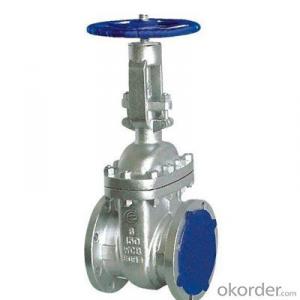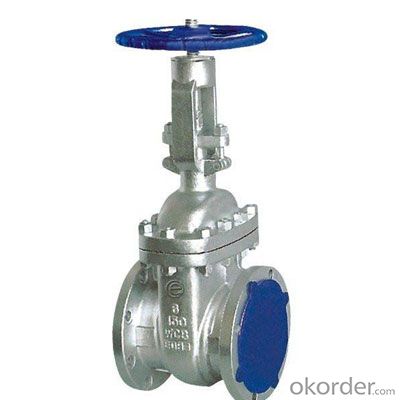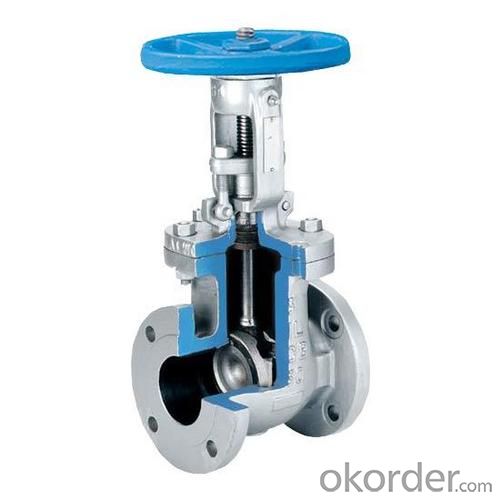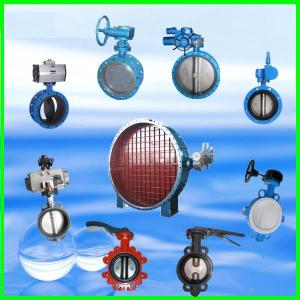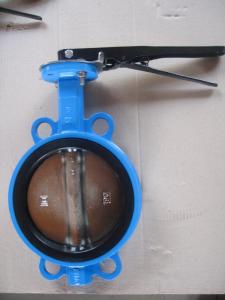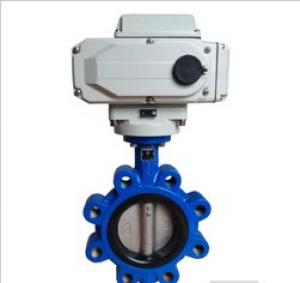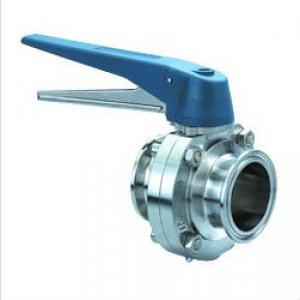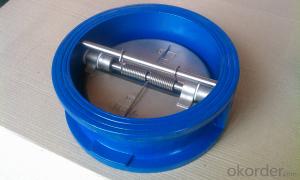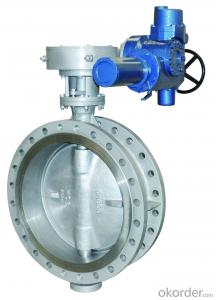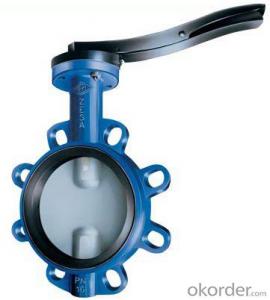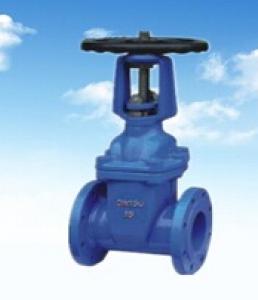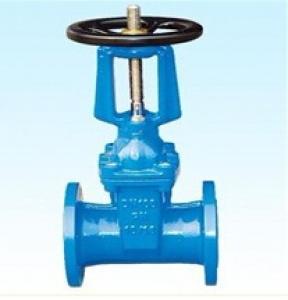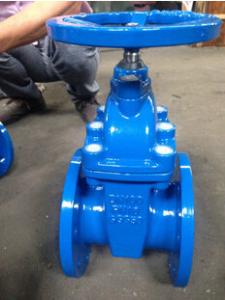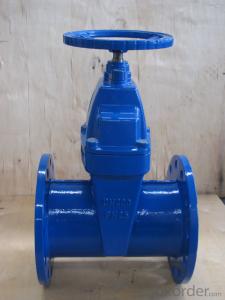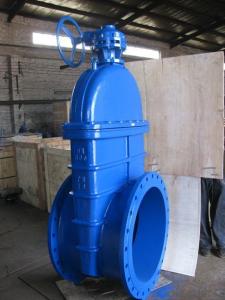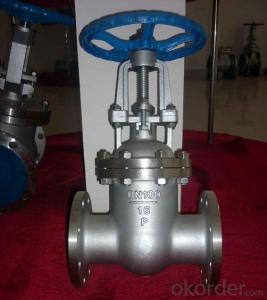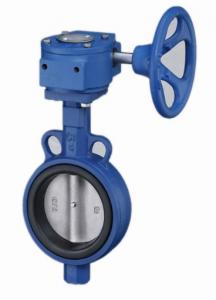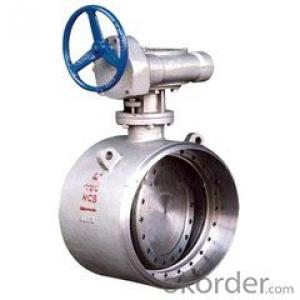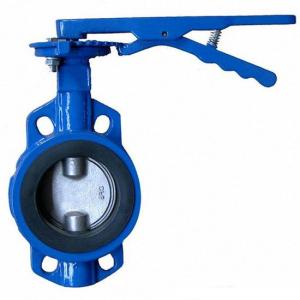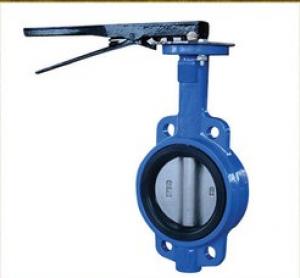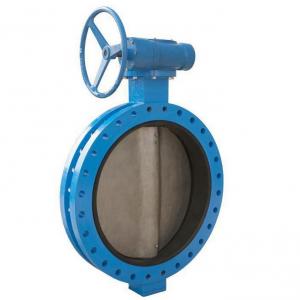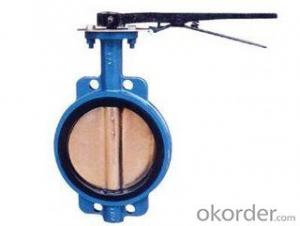Gate Valve Ductile Iron Made Britain Standard DN250
- Loading Port:
- Tianjin
- Payment Terms:
- TT OR LC
- Min Order Qty:
- 50 pc
- Supply Capability:
- 5000 pc/month
OKorder Service Pledge
OKorder Financial Service
You Might Also Like
1.Structure of Gate Valve Description:
A gate valve, also known as a sluice valve, is a valve that opens by lifting a round or rectangular gate/wedge out of the path of the fluid. The distinct feature of a gate valve is the sealing surfaces between the gate and seats are planar, so gate valves are often used when a straight-line flow of fluid and minimum restriction is desired. The gate faces can form a wedge shape or they can be parallel. Gate valves are primarily used to permit or prevent the flow of liquids, but typical gate valves shouldn't be used for regulating flow, unless they are specifically designed for that purpose. Because of their ability to cut through liquids, gate valves are often used in the petroleum industry. For extremely thick fluids, a specialty valve often known as a knife valve is used to cut through the liquid. On opening the gate valve, the flow path is enlarged in a highly nonlinear manner with respect to percent of opening. This means that flow rate does not change evenly with stem travel. Also, a partially open gate disk tends to vibrate from the fluid flow. Most of the flow change occurs near shutoff with a relatively high fluid velocity causing disk and seat wear and eventual leakage if used to regulate flow. Typical gate valves are designed to be fully opened or closed.When fully open, the typical gate valve has no obstruction in the flow path, resulting in very low friction loss.
2. Main Features of the Gate Valve:
• Valve body cavity using non-toxic epoxy resin,both inside and outside flashboard completely is coated with rubber
• Free of water pollution
• High manufacturing accuracy
• High strength
• Environmental protection and energy saving
• Good visual effect
3. Images
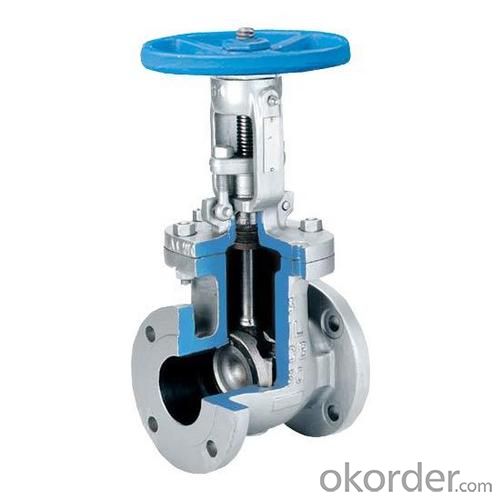
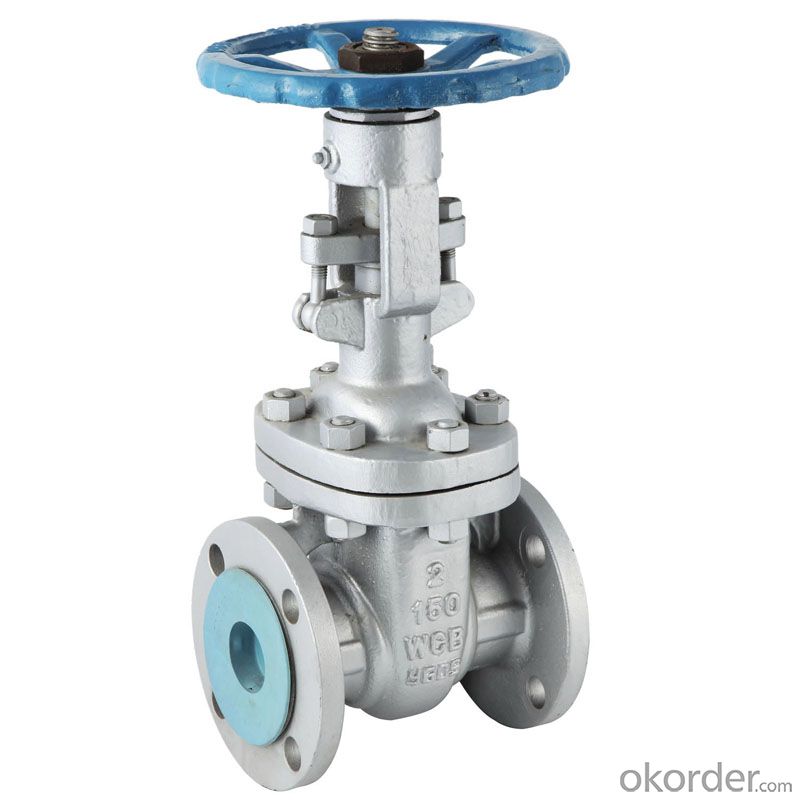
4. Gate valve Specification
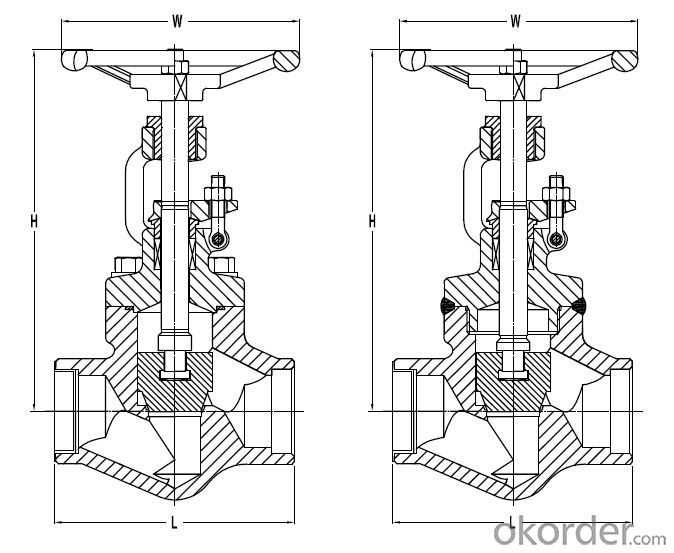
5.FAQ
1. What's are the characteristics of gate valve?
The distinct feature of a gate valve is the sealing surfaces between the gate and seats are planar, so gate valves are often used when a straight-line flow of fluid and minimum restriction is desired. The gate faces can form a wedge shape or they can be parallel.
2. What is the work principle of gate valve ?
The gate faces can form a wedge shape or they can be parallel. Gate valves are primarily used to permit or prevent the flow of liquids, but typical gate valves shouldn't be used for regulating flow, unless they are specifically designed for that purpose. Because of their ability to cut through liquids, gate valves are often used in the petroleum industry.
3. What is the structure?
Bonnets provide leakproof closure for the valve body. Gate valves may have a screw-in, union, or bolted bonnet. Screw-in bonnet is the simplest, offering a durable, pressure-tight seal. Union bonnet is suitable for applications requiring frequent inspection and cleaning. It also gives the body added strength. Bolted bonnet is used for larger valves and higher pressure applications.
- Q: D37A1X9-16CB1: what does this butterfly valve mean?
- The model is composed of 7 units, the types of valves (gate valve Z, J, L, Q ball valve, throttle valve, check valve and H valve, butterfly valve, connection mode (D) internal thread 1 thread 2, welding flange 4, 6, 7, the clamp (0) electromagnetic transmission mode 1 solenoid valve, hydraulic, electric and hydraulic turbine are 2, 3, 4 and 5 gears, bevel gear, pneumatic hydraulic, 6, 7, 8, 9) pneumatic and hydraulic, electric, structure (straight or DC type 7,1 on behalf of the center plate, vertical type A (A) and LT X9) on behalf of a sealant is heat-resistant rubber, kg 16 kg, C represents the body material of carbon steel WCB, B1 on behalf of the valve plate is made of ductile cast iron plating)
- Q: I want to switch off the water in the bathroom only due to replacing sink taps, will water still come out of the pipe if i turn the stop valve
- Water should be off to the sink is the stop valve off
- Q: For whatever reason, Mazda has made it next to impossible to change the PCV valve on the 929. I'm going to have to pull off the plenum and the passenger's side valve cover to replace a $2.00 PCV valve. Before I get too involved, I need to know the torque specs for the valve cover. Also, any other tips on this process would be greatly appreciated. Can I reuse the old valve cover gasket if it's still in good shape? Should I use any kind of sealant in addition to the gasket when I put it all back together? Thanks in advance, by looking at this motor, I can tell I'll have my work cut out for me (for a friggin $2.00 PCV valve, it's usually SO simple!). Like I said, any and all help is greatly appreciated.
- you do not torque valve covers down, buy a new gasket , I would get a good quality rubber one and some blue rtv sealer, clean any crap off the valve cover no glue no bits of gasket nothing, same thing on the head surface, glue the gasket on the valve cover, let it set, then carefully put it on, start with the bolts in the middle and work out finger tight all of them, then just snug the bolts down, dont crush the gasket, you can also use a light duty locktite to hold them in place, and often times old valve covers are warped, it is too your advantage to make sure its as flat as you can get it, or spend a few bucks a buy a new one. your choice, but snug the nuts down good with out crushing and bending the thin sheet metal of the valve cover.
- Q: In the pipeline attached building Atlas 05S502, in the middle of a water meter and check valve, the two sides are divided into two butterfly valve, want to ask why to arrange this way, what is the role of the two butterfly valve?
- Check the water gauge and check valve on both sides to facilitate the maintenance and replacement of water meter and check valve.
- Q: What is an electric two position butterfly valve?
- It's an electric valveProduct brief:??Electric double position butterfly valve, this product is connected with flange type, clip type. Material: cast iron, carbon steel, stainless steel, 304/316Product overview???Electric double position butterfly valve (soft seal) is suitable for temperature less than 200 DEG C, adjust the flux and closure of the role of the medium nominal pressure is less than 1.6MPa of food, medicine, chemical, petroleum, electric power, textile, papermaking, water supply and drainage, gas pipeline. ?main features1 reasonable and novel design, unique structure, light weight, rapid opening and closing.2 operating torque is small, easy to operate, saving smart.3 can be installed in any position, convenient maintenance.4 seals can be replaced, reliable sealing performance to achieve two-way seal zero leakage.5 sealing material aging resistance, corrosion resistance, long service life etc..Electric double position butterfly valve adopts standardDesign standard: GB/T12238-1889Flange size: GB/T9113.1-2000; GB/T9115.1-2000; JB78Length: GB/T12221-1889Pressure test: GB/T13927-1992; JB/T9092-1999
- Q: Function of signal butterfly valve in fire sprinkler system
- The signal butterfly valve is generally installed in two parts: floor level, dry pipe, flow indicator front end, trunk pipe, wet alarm valve, front end.Floor level pipe installation is a function of the signal valve, when the floor spraying system needs repair, close the valve, open the end of the floor drain, emptying the water in the spray system, maintenance; two is the sprinkler system is not allowed inside water, when the butterfly is closed, will transmit a signal to the the fire alarm system, fire alarm system receives a monitoring signal (so called signal butterfly valve), fire sprinkler system that the floor is anhydrous state, fast repair.Wet alarm valve at the front of the signal butterfly valve with the main floor of the main role of the butterfly valve, first, maintenance, and two is the prompt sprinkler system, there is a signal butterfly valve closed, should be repaired as soon as possible.
- Q: Specifically an engine valve retainer.
- Valve Spring Retainer
- Q: Butterfly valves are widely used in 2.0MPa below the pressure and temperature of not more than 200 degrees of various media, right?
- First of all, is not the butterfly valve butterfly valve.Butterfly valve in the valve around the fixed axis rotating valve, called butterfly valve.1., as a sealed butterfly valve, it has been developed rapidly since the appearance of synthetic rubber, so it is a new type of shut-off valve. In our country until 1980s, the main role of butterfly valves in low-pressure valves, valve seat using synthetic rubber, by 90s, hard seal "metal seal" butterfly valve to rapid development. There are a number of valve factory can produce steady pressure metal seal butterfly valve, butterfly valve shall be shipped to a broader area.2. butterfly valves can transport and control the medium with water, condensed water, recycled water, sewage, sea water, air, gas, liquid gas, dry powder, mud, fruit pulp and a mixture of suspended solids.The domestic butterfly valve parameters are as follows:Nominal pressure: PN0.25 - 4.0MPaNominal diameter: DN100 - 3000mmWorking temperature: less than or equal to 425 DEG C
- Q: DN80 flange butterfly valve, DN80 flange butterfly valve DN80, flange butterfly valve DN80 what is the difference?
- No, what's the difference?. It's not all the same.Flange connectionDN80 caliber butterfly valve. What's the difference?. Model and pressure. Materials are not ~!
- Q: Hi guys, i asked a question before pertaining to the amount of cylinders and asking if it meant V4 or V6 or whatever.I actually meant to say VALVES, not cylinders. IS there a direct correlation between VALVES and Clyinders..Eg, My car, which is a 2001 Neon LE states right on the engine block quot;16 VALVEquot; in bright letters. I am sure this is a 4 cylinder engine. I haven't had a car that broadcasted the number of VALVES before. Another car I had broadcast that is was a 3.3 Liter V6 right on the engine.Is there a mathematical relationship between VALVES and cylinders, or would my car be braodcasting 16 VALVES, because a 4 cylinder doesn't typically HAVE 16 valves, or what is the story??Recently, I was looking at an altima, and it said 24 valves. Can you tell just by the number of valves if it is a 4 cylinder or 6 cylinder or whatever??Thanks.
- Simply the engine size and the number of cylinder, the 3.0 has 6 the 2.3 has 4, however both engines have four valves per cylinder(2 intakes 2 exhaust) and dual overhead cams(dohc)
Send your message to us
Gate Valve Ductile Iron Made Britain Standard DN250
- Loading Port:
- Tianjin
- Payment Terms:
- TT OR LC
- Min Order Qty:
- 50 pc
- Supply Capability:
- 5000 pc/month
OKorder Service Pledge
OKorder Financial Service
Similar products
Hot products
Hot Searches
